Bringing brand to life in physical spaces

Moving beyond the typical into the physical
In order to grow and drive your business successfully, you have to do more than just elevate a single touchpoint or speak to customers through one channel via marketing efforts. Instead, you need to leverage everything in your arsenal to tell a strong, unified story about your brand—one that connects with clients and consumers at every possible moment across their journey, and one that extends beyond marketing channels and into the full brand experience.
Learn More: Creating a Holistic Experience – A Quest Diagnostics Client Story
Most brand owners typically focus brand efforts exclusively on their external-facing marketing such as a range of print and digital communications—options like billboards, posters, and brochures; website content; social media posts; television spots; and more. But while these initiatives may have a wide reach, they can only do so much because they’re mostly two-dimensional—and though some may be interactive, that engagement is still contained on a screen. To truly make the desired impact, brand owners must think far beyond just nailing these traditional marketing channels that speak outwardly to consumers.
But what if there were a way to move beyond these barriers—to think outside of mediums that are merely visual or auditory, and instead create fully immersive experiences that invite consumers in. For businesses with physical locations, space offers an exciting opportunity to bring brand to the forefront in a more tactile and sensory way.
Overlooked in the ecosystem
Often, space is seen as a vessel. It’s real estate that allows businesses to showcase and sell their products and services in person to customers—nothing less, nothing more. But this perspective can be limiting. It positions space as a purely tactical and functional vehicle, rather than considering it an inspirational element in marketers’ toolboxes. This viewpoint diminishes the potential of environments everywhere, boiling their purpose down to the basics: How do I call attention to my property? How do I position my logo outside of my building? How do I help passersby notice my shop from the street?
These questions around identification, signage, and wayfinding are important—but they’re just one piece of the puzzle. The reality is that branded environments are a critical component in the marketing ecosystem— one with the power to make a strong impact that stays with visitors long after they leave. And that’s because these settings are not simply focused on sight, but also rely on smell, sound, and touch to create a feeling that other types of collateral just can’t evoke.
All about emotion
It’s this ability to elicit feeling that’s one of the most compelling aspects of physical space. Do you remember the last time you went to the doctor? A clean and organized reception area might have made you feel safe and comfortable—but, depending on how sterile it looked, the atmosphere may also have come across as impersonal and clinical. Or consider a coffee shop. Cozy touches and accents might feel inviting, but if that coziness veers into clutter, it can become an entirely different café. From lighting and layout to color and material—all of these features can influence the mood of your environment. And how thoughtfully a space is designed can leave an overwhelming positive or negative impression on those who use it—inevitably affecting how people think about the overarching brand.
A new standard: Human-centric design
It all comes down to a philosophy known as human-centric design—a concept that deeply aligns with our own guiding principles at Monigle. Essentially, it’s a way to infuse empathy into a space by always considering the needs of the individuals who work, live, and play there—both customers and employees alike. And this strategy isn’t just practical. It’s also incredibly powerful, helping to forge stronger connections between brands and the people they serve.
Learn More: Guiding Principles for Creating a Human Brand
Space represents what businesses stand for
Ultimately, space is an embodiment of not only a business, but also the big ideas behind it. It can exemplify a company’s values and serve as an extension of its personality—capturing the essence of what a brand is all about.
One Medical
Built on the promise of transforming primary health care, One Medical does just that—starting with spaces that lean heavily into human-centric design. The membership-based network asks customers to “imagine a doctor’s office that’s built on respect—for you, your feelings, and your needs.”
Learn More: The New Spaces of Healthcare
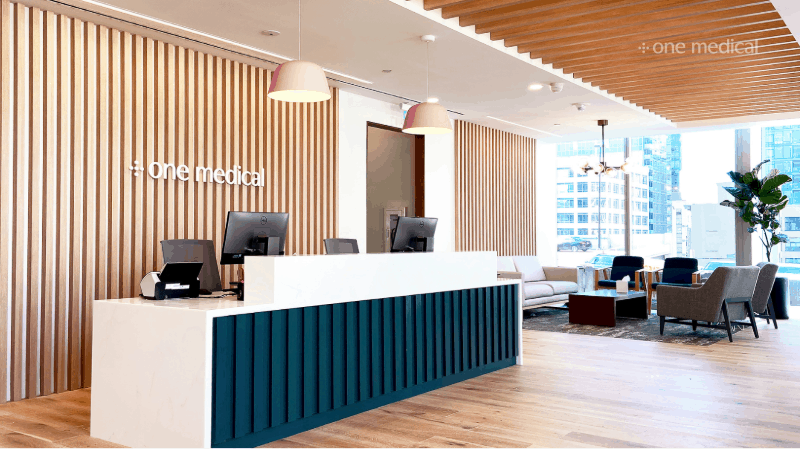
And that means when you walk in, it never seems like you’re in a doctor’s office. Waiting rooms look more like living rooms, with comfortable seating, unique furniture, and décor that could exist in your own home. Biophilic principles help bring nature indoors through artfully arranged plants and natural lighting, which avoids the harsh fluorescent panels that are so common in these environments. This is a place that feels healthy. A place where, ironically, the stress and sickness usually associated with a doctor’s office feels far away, even though exam rooms are just a few feet down the hall. And that’s the whole point. One Medical is eliminating the unfavorable connotations around annual check-ups or urgent care visits, and replacing them with pleasant, enjoyable experiences. It’s a mission that inspires other aspects of the brand, too—from customer service to technology. But it all starts with interior design.
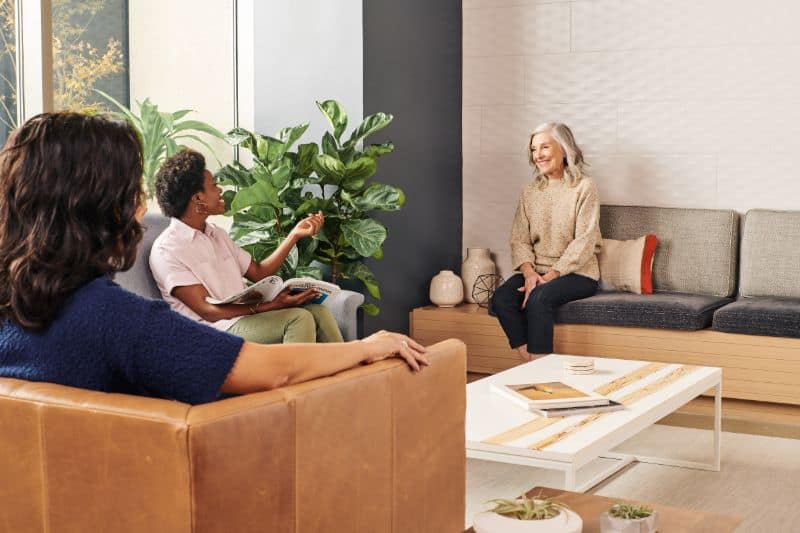
Salesforce
Spaces aren’t always customer-facing. B2B businesses like Salesforce are focused not on storefronts or service environments, but on offices that support their own teams. But while it may approach design from an internal perspective, the Salesforce brand and its external manifestation still plays a huge role in how the organization thinks about its workplace.
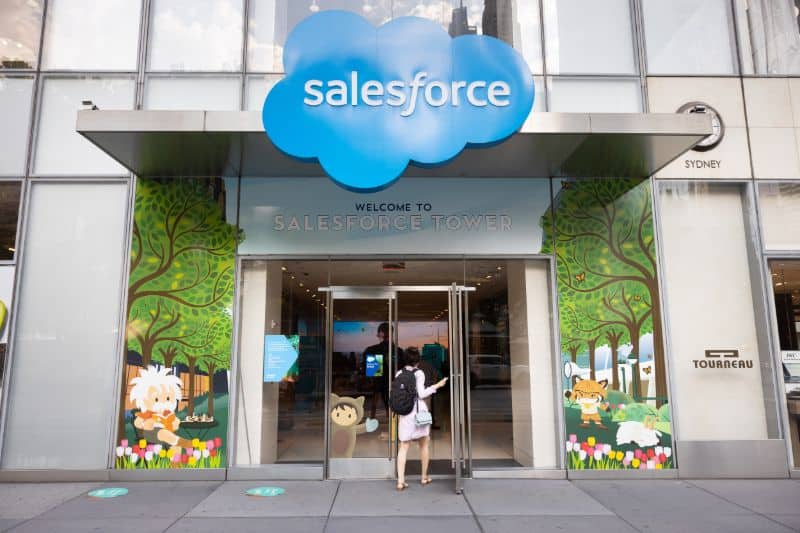
A software company dedicated to providing CRM solutions, Salesforce refers to itself as a “relationship company.” “Bringing companies and customers together” is what it does in business—and it applies this same ethos of community within its buildings. Lobbies are friendly and public-facing, welcoming everyone in—whether they’re current employees or recruits, prospects or partners. Meanwhile, social floors function as gathering places for staff members to interact and engage with one another. The result? An environment that echoes Salesforce’s own brand identity and brings the spirit of collaboration that guides them to life.
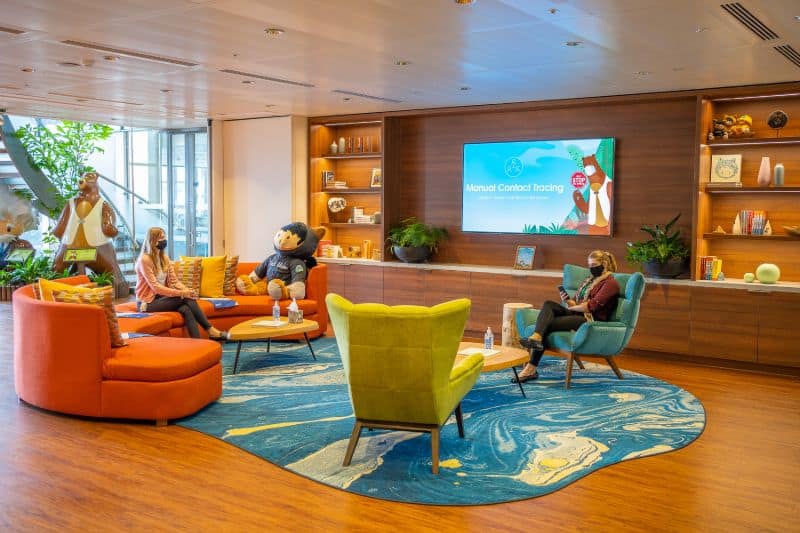
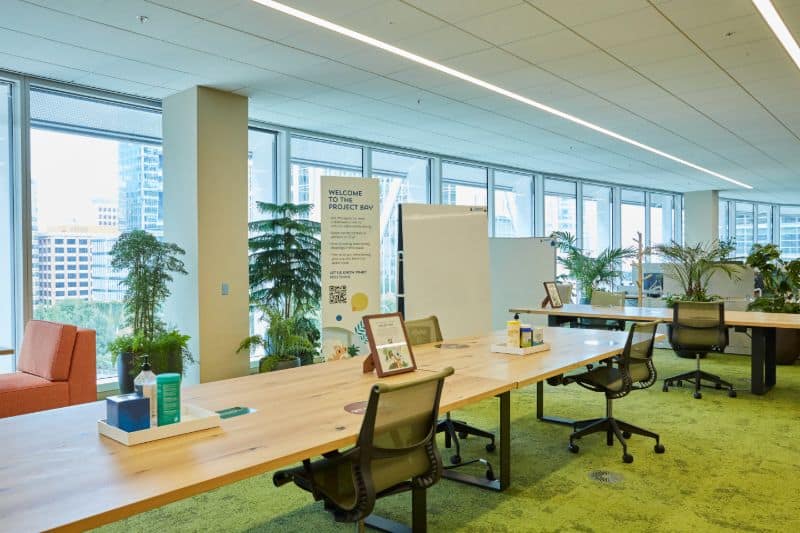
Today, branded environments have become more important than ever for enterprises across both the B2C and B2B spectrum. Whether it’s a restaurant or a conference room, a pop-up kiosk or an entranceway—these places do more than communicate a message. They create an all-encompassing feeling—one that can affect visitors’ emotions and resonate with them far into the future. By embracing space as a true brand touchpoint and designing around real people’s needs, businesses can set themselves up for success—and keep their customers coming back.
How do your company’s environments bring your brand to life? Did this article spark a need for change within your organization? Learn more about our branded environment capabilities and see some of the work we’ve done. Reach out to us, let’s chat about how we can bring your brand to life in a physical space!



